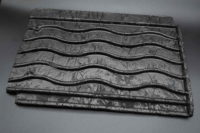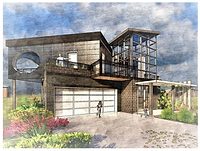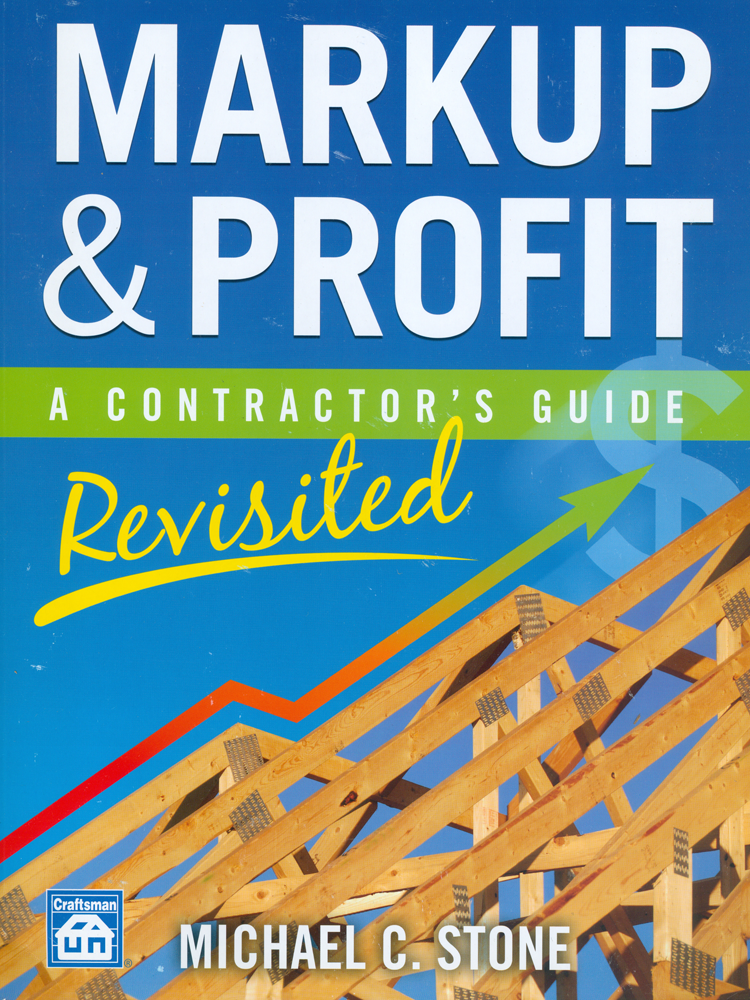Semplastics Awarded Federal Contracts to Develop Coal-Based Roof Tiles and Building Materials

A sample of X-TILES, roofing tiles created by X-MAT using coal composites. The tiles are said to be fireproof and two to four times stronger than ceramic roof tiles. Photo courtesy of X-MAT.
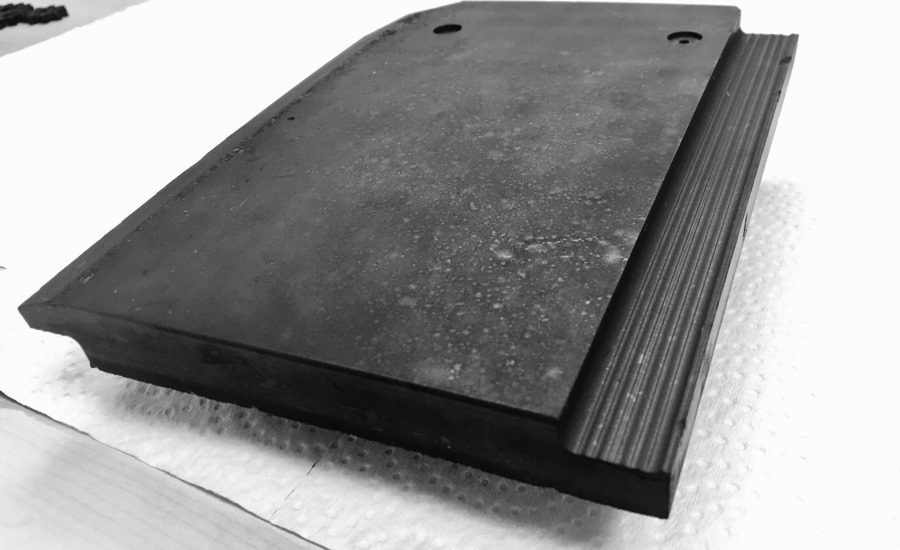
A prototype of the coal-based X-TILE. Photo courtesy of X-MAT.
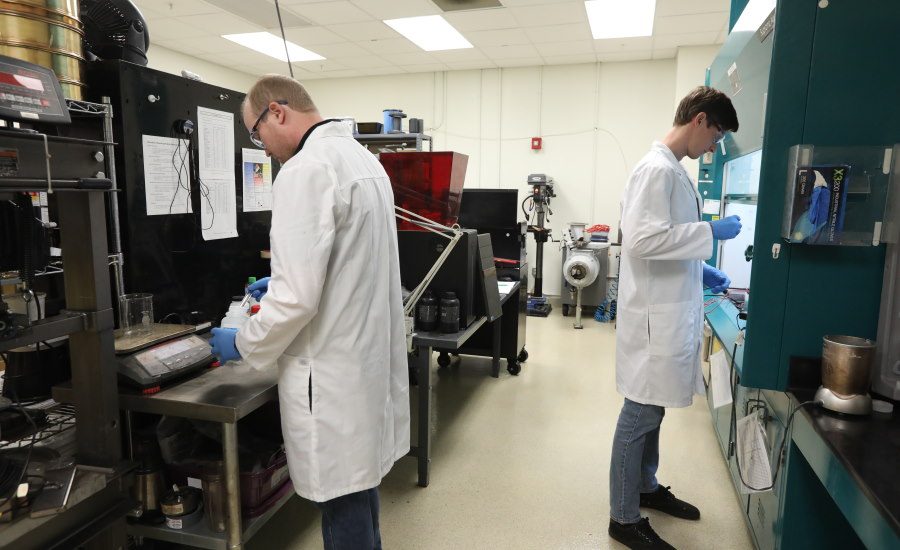
Scientists with X-MAT are looking into creating roofing tiles as well as other building materials using coal thanks to funding from the Department of Energy's National Energy Technology Laboratory (NETL). Photo courtesy of X-MAT.



At first glance, the premise behind the roof tiles developed by Florida-based X-MAT seems contradictory. How can coal-based tiles be fireproof and eco-friendly?
But thanks to some cool chemistry and a desire to better the environment, X-MAT’s X-TILES are pushing the limits of what roofing tiles can be by using coal to make a high-performance product. And with a new $1.4 million contract from the Department of Energy, X-MAT is now setting its sights on creating a variety of coal-based building materials.
“It’s coal reimagined — how can I use coal in a way that doesn’t have the deleterious effects,” said X-MAT CEO Bill Easter. “We don’t burn it, and what we do make doesn’t burn, so it’s really counterintuitive kinds of things, but we’re pretty excited about it.”
Semplastics, the parent company of X-MAT, received the $1.4 million in funding over the summer to research and develop high-strength commercial building components using coal waste. This new contract is just the latest Semplastics received from the Department of Energy’s National Energy Technology Laboratory (NETL). In 2019, NETL awarded Semplastics and X-MAT $1.5 million to further develop its X-TILES, and nearly $1 million this year to fund research for turning coal into battery materials.
"The value of the roof tiles is more than just science,” said Easter. “The success of this next generation of roofing tiles makes America's homes safer and leads to a productive way to use coal."
A Tile in the Rough
The choice for using coal originated around seven years ago when X-MAT sought out an inexpensive source of carbon. It discovered coal fits the bill, and when X-MAT looked into it further, it realized coal had some amazing properties it could utilize.
Development of the coal composite tiles began when X-MAT partnered with West Virginia’s Center for Applied Research and Technology (CART) about four years ago. An initial Phase 1 SBIR grant from NETL kicked off the research, and in March 2019, the company announced the product’s name as X-TILES.
X-TILES are made using a polymer-derived ceramic mixed with coal — specifically, Appalachian coal. The process allows the company to use coal without actually burning it, which reduces its carbon footprint and greenhouse gas emissions.
“It’s coal-derived,” Easter explained. “We’re pulling the carbon out and we’re chemically bonding it to our materials and putting it into this composite. It’s really a ceramic, which is why it won’t burn.”
As a result, the tiles are fireproof and can withstand extreme temperatures between -238 degrees to 2,012 degrees Fahrenheit. The tiles are also said to be two to four times stronger and weigh 30% less than ceramic roof tiles.
So what does all this mean for roofing contractors? X-MAT claims its tiles are easier to handle thanks to being lightweight, but they’re also easy to install and replace. Meanwhile, distributors would benefit from lower shipping costs and the chance to earn CO2 credits due to the low carbon footprint.
That lower carbon footprint may create other incentives as well. Easter said X-MAT wants to work with local, state and federal governments to create economic incentives for using the tiles, similar to the incentives offered for solar power.
When it comes to color options, black is the natural and obvious choice, but other colorings and glazes are in development. Easter said X-MAT is even working on a slate replacement with pressed tiles.
“This stuff is actually stronger than slate,” Easter said.
Making X-TILES a Reality
The biggest challenge at this point is scaling up operations, but with the help of the $1.5 million grant it received last year, Easter wants to have X-TILES available for contractors “as soon as we can.” He said the goal is to increase production so they can be sold in squares and be available in markets where roofing tiles and slate are commonly used.
The tiles will likely be at the premium end of pricing, but Easter expects costs will go down as X-TILES become more readily available.
“As we continue to scale it up, the more coal we can put in it without degrading the combustibility, the cheaper it will be,” Easter said.
Another major hurdle to overcome is setting up a pilot line in West Virginia, where Appalachian coal is abundant. X-MAT must transfer the technology from its lab in Florida to Bluefield, W.V. and set up the procedures to begin production.
That’s where X-MAT’s relationship with CART, located in West Virginia, comes into play, said Bruce Mutter, an engineering professor at Bluefield State College and leader of CART.
“We want to continually improve the molding and pressing process, optimize the pressures and temperatures, and envision the pilot line for initial production,” said Mutter. “The (funding) definitely accelerates the ‘time-to-market,’ especially for a materials-based product like X-TILE, so the Department of Energy commitment is very important.”
Mutter said the center’s role is to design and CNC mill the compression molds needed for pressing prototype X-TILES, and to help X-MAT set up its Bluefield operation.
"If we can manufacture a strong, lightweight, fire and heat resistant interlocking tile with an authentic slate roof appearance that is easy to install and maintain, then we think using the low-cost coal, abundant here in West Virginia, would be a real game-changer for the roofing industry,” said Mutter.
Commercial Coal Products
The most recent $1.4 million contract from NETL is opening doors to going beyond roofing tiles and into other products like bricks, blocks and façade panels. Easter said X-MAT is able to use both pure coal and burnt coal (known as fly ash) to make nearly everything but the windows for a building.
“So with our technology, not only can we use coal, but we can use the waste product, so we turn those into useful things. Some of our scientists have ideas where you can mix coal and the byproduct to get the best composite,” he said. “Because the fly ash is really light and has more insulating capabilities, you could use it in areas like making a building.”
Easter said the ultimate goal is to have homes constructed completely from coal-derived building materials. Semplastics and X-MAT are working with the University of North Dakota Energy and Environmental Research Center (EERC) and CART on this project.
“We think the technology is versatile enough to be successful in various geographic areas,” Easter said. “We can make it more conductive or more insulated depending on what’s required.
“We’re working to create a circular economy where we take coal waste materials and turn them into something remarkable. We’re already seeing great progress with prototypes.”
Looking for a reprint of this article?
From high-res PDFs to custom plaques, order your copy today!




